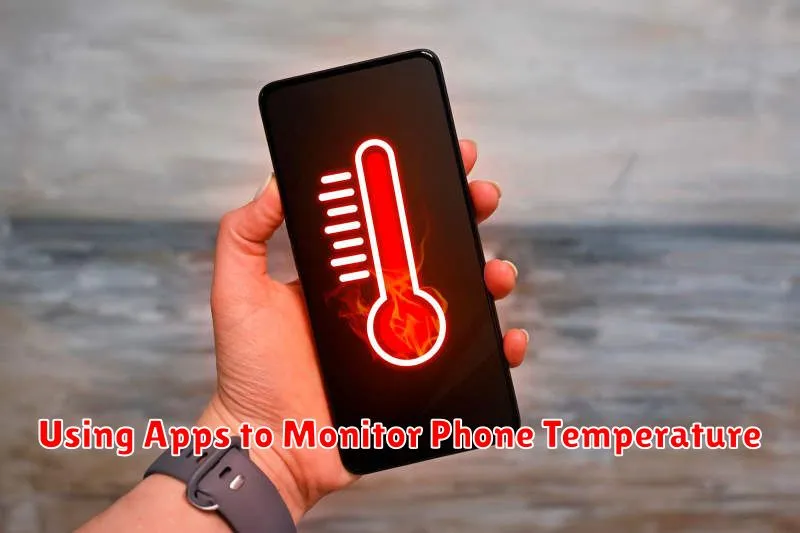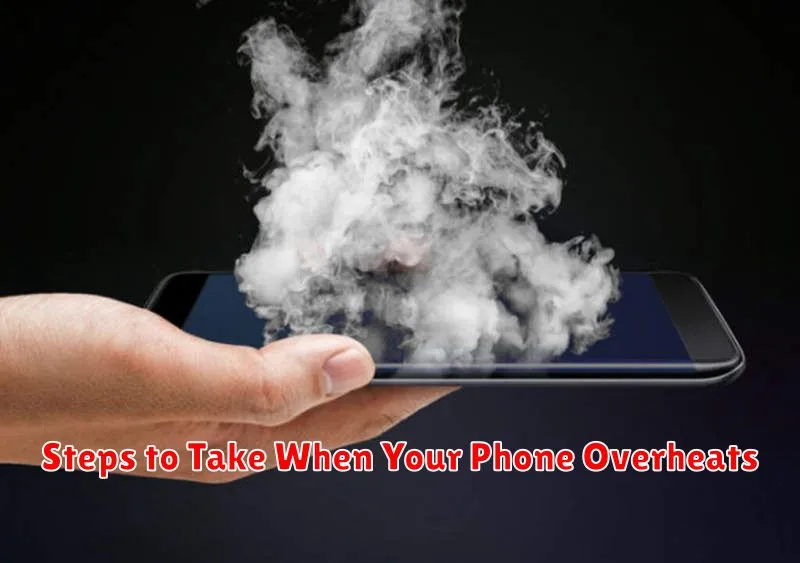Overheating in smartphones is a common yet serious issue that can significantly impact performance, battery life, and even cause permanent hardware damage. Understanding the causes of overheating, implementing effective prevention measures, and knowing the right solutions are crucial for maintaining the health and longevity of your device. This article explores the various factors that contribute to smartphone overheating, from demanding applications and prolonged usage to environmental conditions and underlying hardware problems. By recognizing the warning signs of an overheating phone, you can take proactive steps to mitigate risks and ensure optimal performance.
Experiencing overheating issues with your smartphone? From sluggish performance and rapid battery drain to unexpected shutdowns and potential hardware damage, excessive heat can severely impact your device. This comprehensive guide delves into the common causes of smartphone overheating, offering practical prevention techniques and effective solutions to address this prevalent problem. Learn how to identify the symptoms of an overheating phone and take the necessary steps to protect your investment and maintain optimal functionality.
Common Signs of Smartphone Overheating
Recognizing the signs of an overheating smartphone is crucial for preventing potential damage. Excessive heat is the most obvious indicator. Your phone may feel uncomfortably warm to the touch, even burning in extreme cases.
Performance slowdown is another common sign. Apps may take longer to load or become unresponsive. The phone itself may lag or freeze intermittently. The battery may also drain rapidly, even when the phone is not in use. In severe cases, the phone may shut down unexpectedly to protect itself from damage.
Sometimes, a warning message may appear on the screen, explicitly stating that the phone is overheating. You might also notice the charging process slowing down significantly or even stopping completely. This is a safety feature designed to prevent further overheating during charging.
Understanding the Causes of Overheating
Several factors can contribute to smartphone overheating. Demanding applications like high-graphics games or video editing software push the processor and GPU, generating significant heat. Streaming video or music for extended periods also puts a strain on the device’s resources. Background processes, even seemingly minor ones, can cumulatively contribute to overheating. A malfunctioning or outdated operating system can also be a culprit.
Environmental factors play a role as well. Using your phone in direct sunlight or hot environments can elevate its temperature significantly. Charging the phone while simultaneously using resource-intensive apps adds to the thermal load. Lastly, a faulty battery or other hardware problems can lead to excessive heat generation. Identifying the specific cause is the first step in resolving overheating issues.
Using Apps to Monitor Phone Temperature

Several applications are available on app stores that can help you monitor your smartphone’s temperature. These apps use built-in temperature sensors to provide real-time temperature readings and historical data. While the absolute accuracy of these readings can vary, they offer a useful way to track temperature trends and identify potential overheating issues.
When choosing a temperature monitoring app, consider its features and user interface. Some apps offer alerts when the phone reaches a certain temperature threshold, allowing for proactive intervention. Others provide detailed logs and graphs of temperature fluctuations over time, which can be valuable for troubleshooting.
It’s important to understand that these apps are primarily monitoring tools. They do not directly cool down the phone. However, by providing you with temperature information, they empower you to take appropriate actions to manage your phone’s temperature and prevent overheating.
Tips to Prevent Smartphone Overheating
Preventing overheating involves mindful usage and proactive measures. Avoid direct sunlight exposure for extended periods. When using resource-intensive applications like gaming or GPS navigation, consider using them in shorter bursts.
Close unused apps running in the background. These consume processing power and contribute to heat generation. Similarly, dim your screen brightness and shorten the screen timeout duration.
Remove bulky or insulating phone cases, especially when charging or performing demanding tasks. Ensure adequate ventilation around the device. Avoid charging your phone on soft surfaces like beds or pillows, as these can trap heat.
Keep your phone’s software updated. Updates often include performance optimizations and bug fixes that can improve thermal management. Lastly, use original chargers and cables as counterfeit accessories can lead to inefficient charging and excess heat.
Troubleshooting Overheating Problems
If your smartphone is overheating, try these troubleshooting steps:
Software Issues
Restart your phone. A simple restart can often resolve temporary software glitches contributing to overheating.
Check for and install system updates. Updates often include performance optimizations and bug fixes that address overheating.
Close unused apps. Background apps consume resources and generate heat. Close any apps you’re not actively using.
Hardware Considerations
Remove your phone case. Cases can insulate the device and trap heat. Removing the case allows for better heat dissipation.
Avoid direct sunlight and hot environments. High ambient temperatures exacerbate overheating. Keep your phone in a cool, shaded area when possible.
Allow the phone to cool down. If the phone is excessively hot, power it off and let it cool down completely before using it again.
Advanced Troubleshooting
If the problem persists, consider factory resetting your device. Note that this will erase all data, so back up important information beforehand. If a factory reset doesn’t solve the issue, it may indicate a hardware problem requiring professional repair.
Steps to Take When Your Phone Overheats

If your phone becomes excessively hot, take immediate action to prevent damage. First, stop using it. Put down the phone and let it cool naturally. Avoid placing it under pillows or blankets which can trap heat.
Next, remove the case if you have one. Cases, especially tight-fitting ones, can insulate the phone and exacerbate overheating.
Reduce screen brightness and disable power-intensive features like Bluetooth, Wi-Fi, and location services if they are not immediately needed. Close any running apps, especially games or streaming services. These actions lessen the workload on the processor and can help lower the temperature.
Move your phone to a cooler environment, out of direct sunlight. Do not put it in the refrigerator or freezer as rapid temperature changes can cause condensation and damage the internal components. Allow the phone to cool down gradually at room temperature.
Long-Term Solutions for Overheating Issues
Addressing persistent overheating requires a proactive approach. Consider the following long-term solutions to mitigate future occurrences:
Optimizing Software and Apps
Regularly update your phone’s operating system and apps. Updates often include performance improvements and bug fixes that can address overheating. Uninstall or disable unused apps to free up system resources and reduce background activity.
Battery Health
If your battery is old or damaged, it might be contributing to overheating. Consider replacing your battery with a genuine manufacturer-approved replacement. Avoid using unofficial chargers, as they may not regulate power correctly and could contribute to heat buildup.
Usage Habits
Avoid exposing your phone to direct sunlight for extended periods. Also, refrain from charging your phone under pillows or blankets, which can trap heat. Allow your phone to cool down after intensive use, such as gaming or streaming.
Professional Help
If overheating persists despite these measures, consult a qualified technician. There might be underlying hardware issues requiring professional repair.

